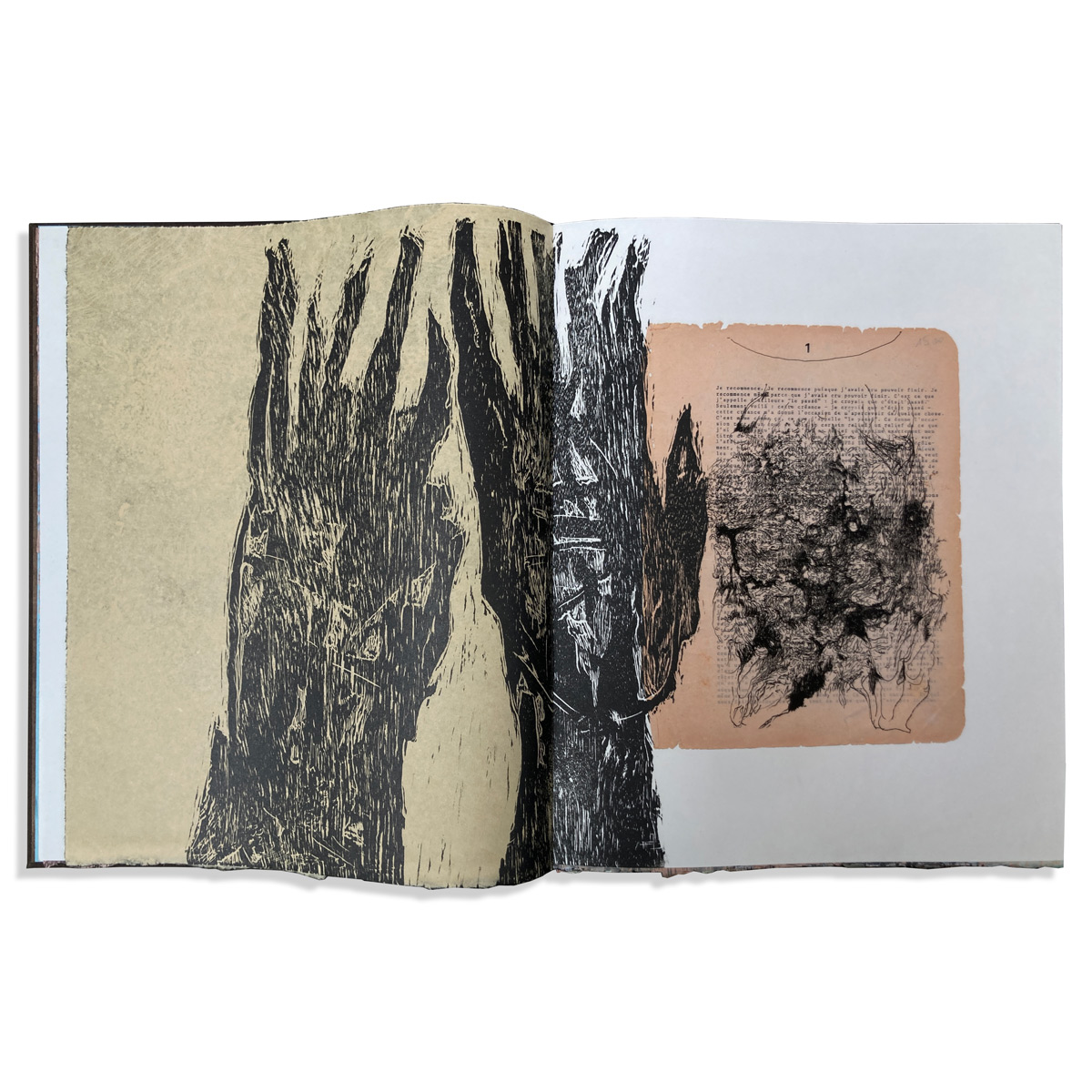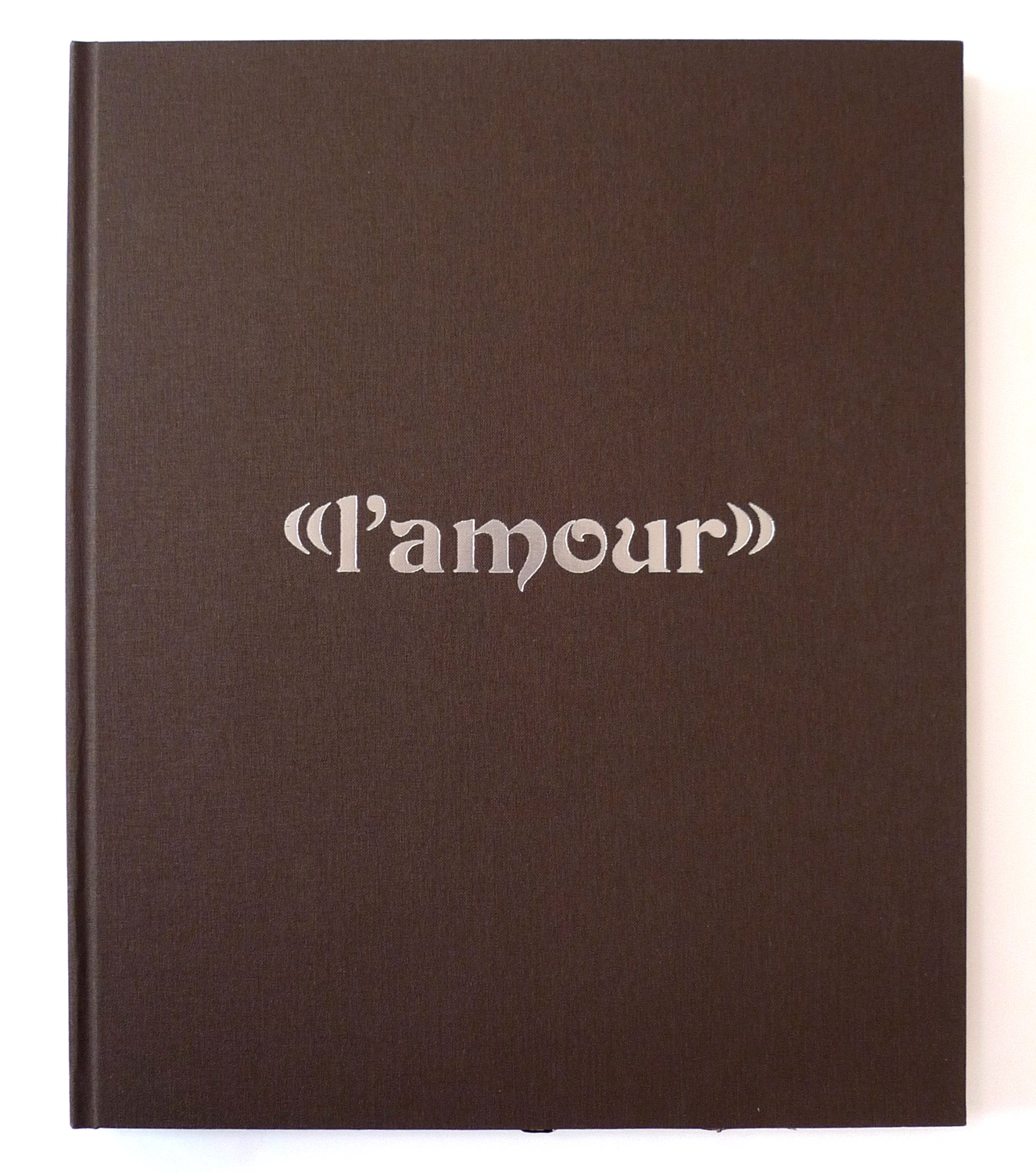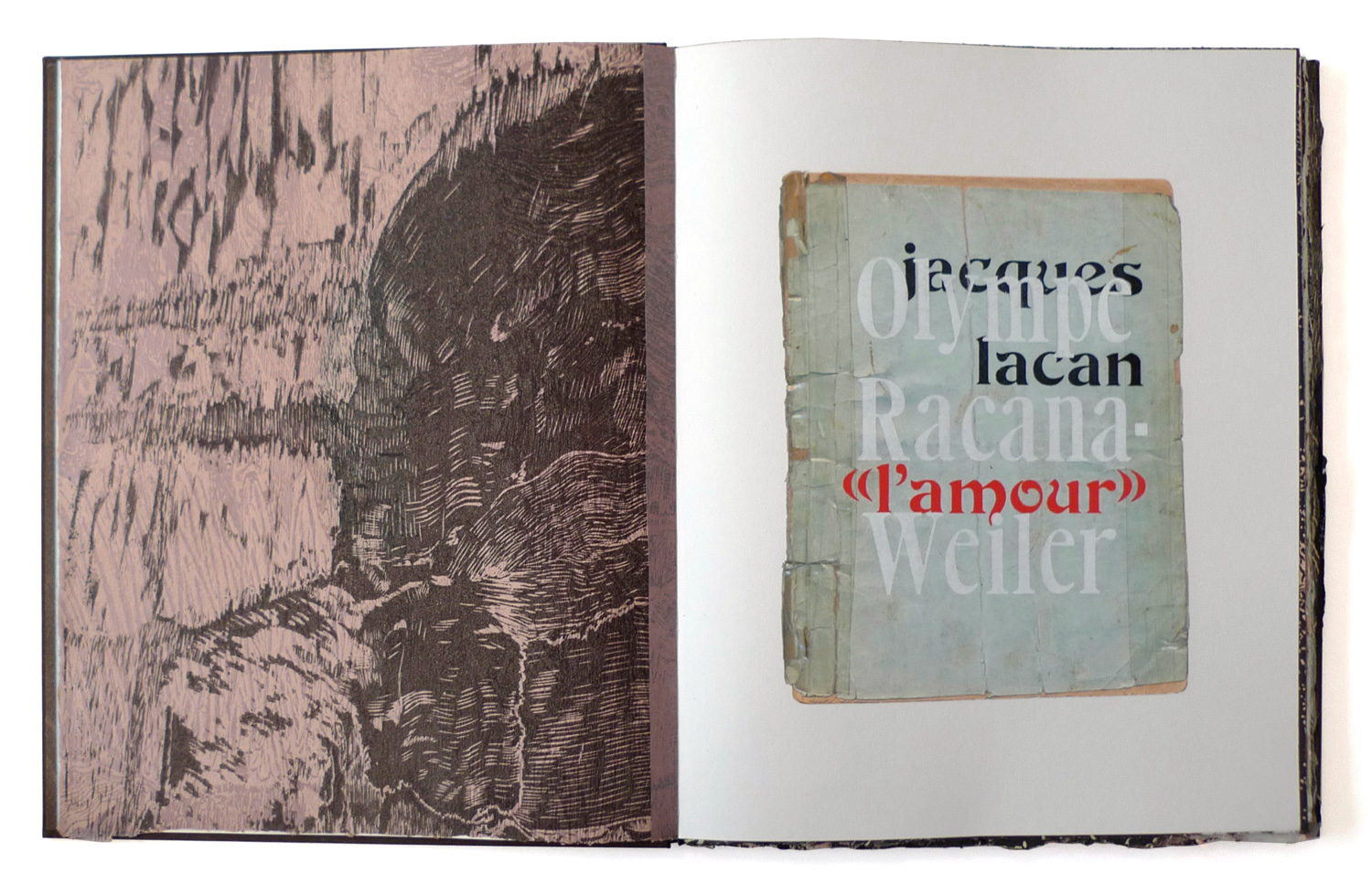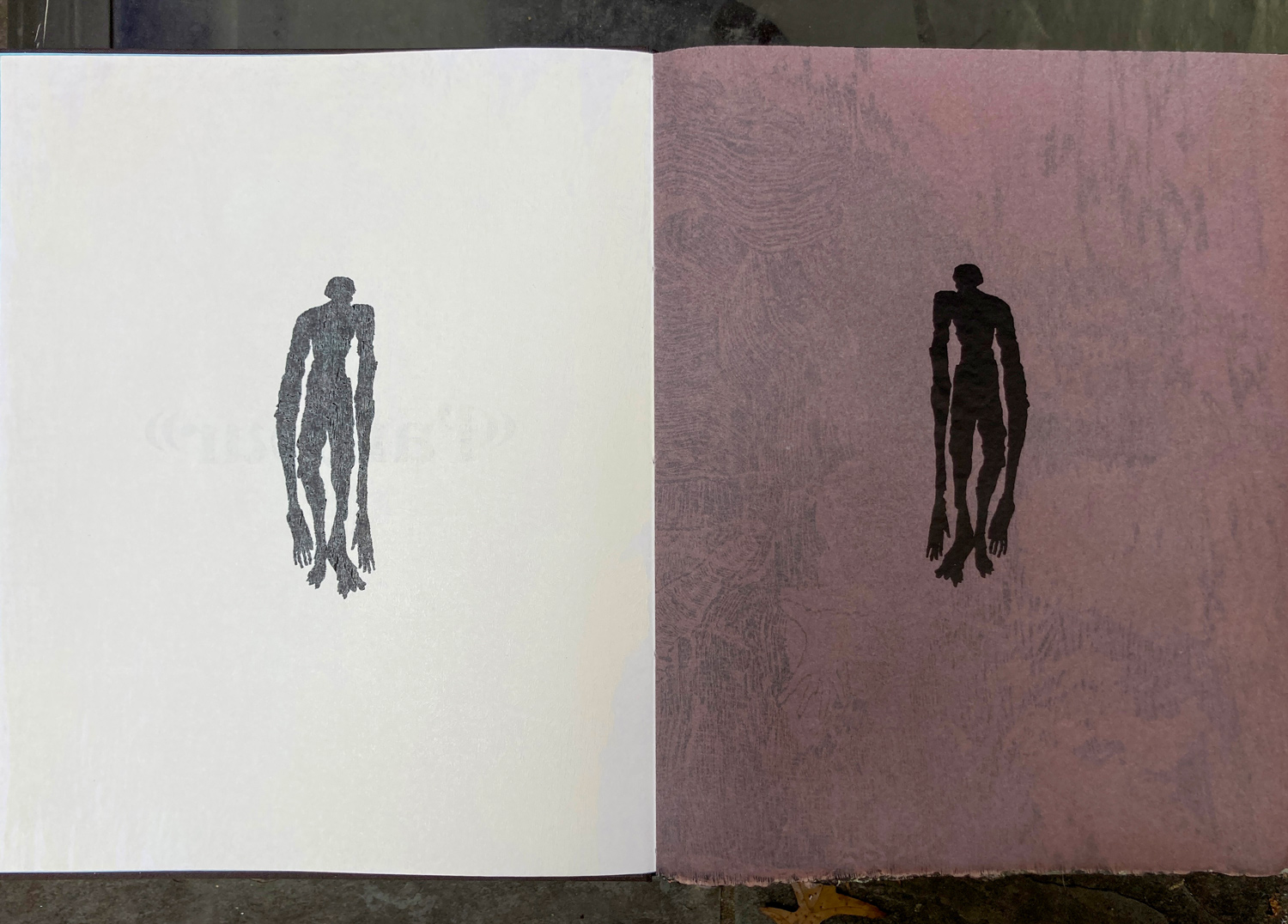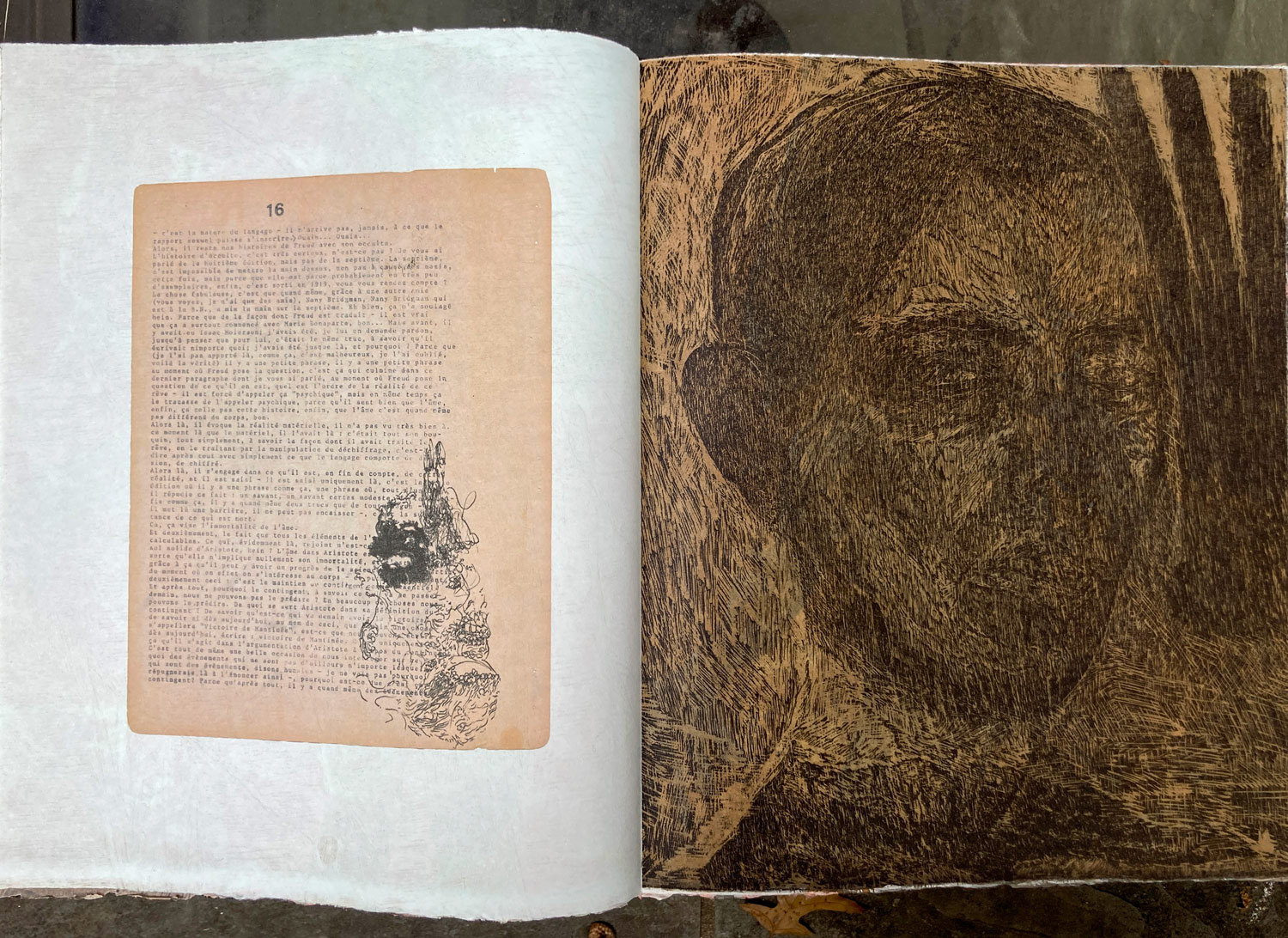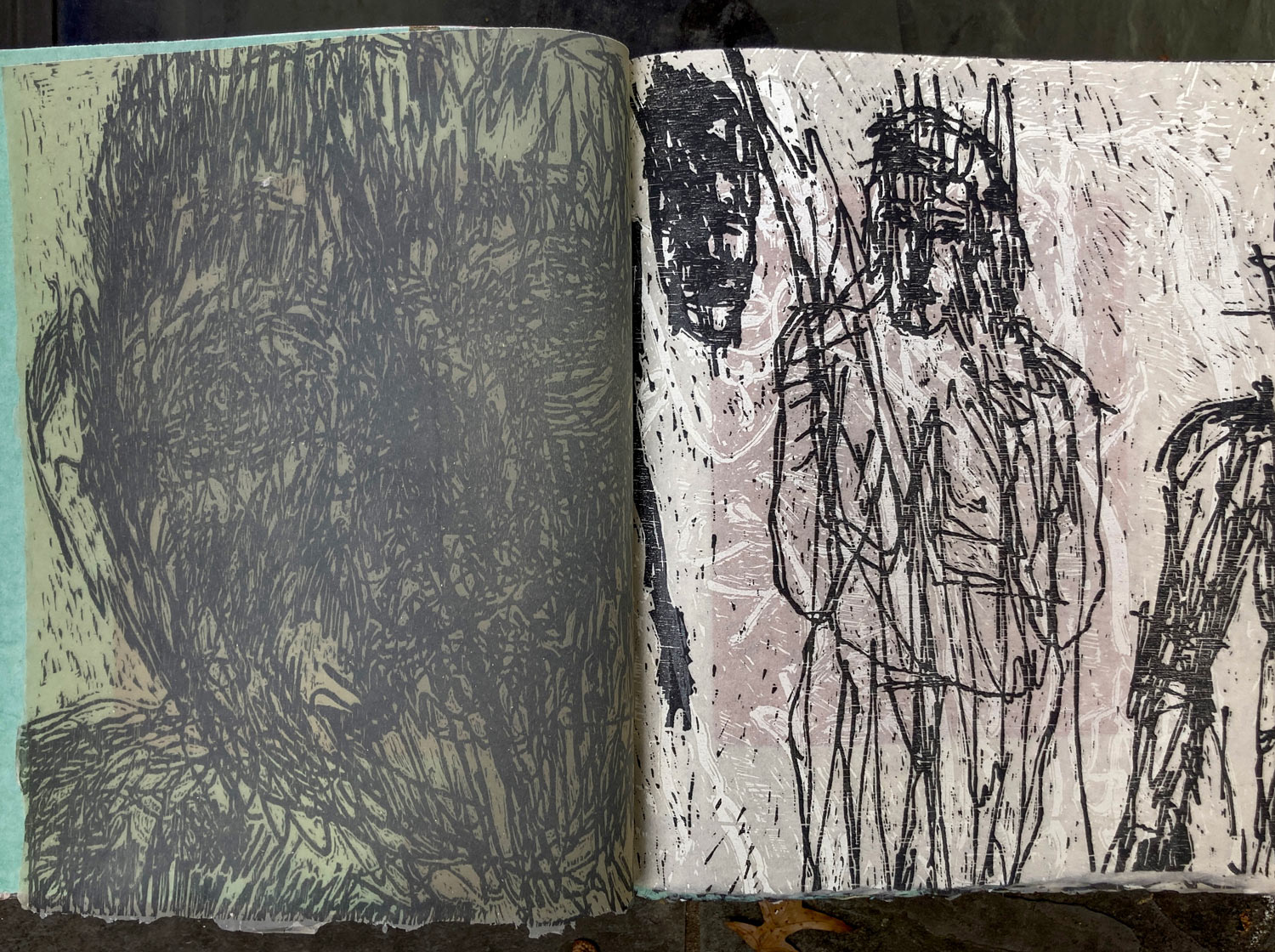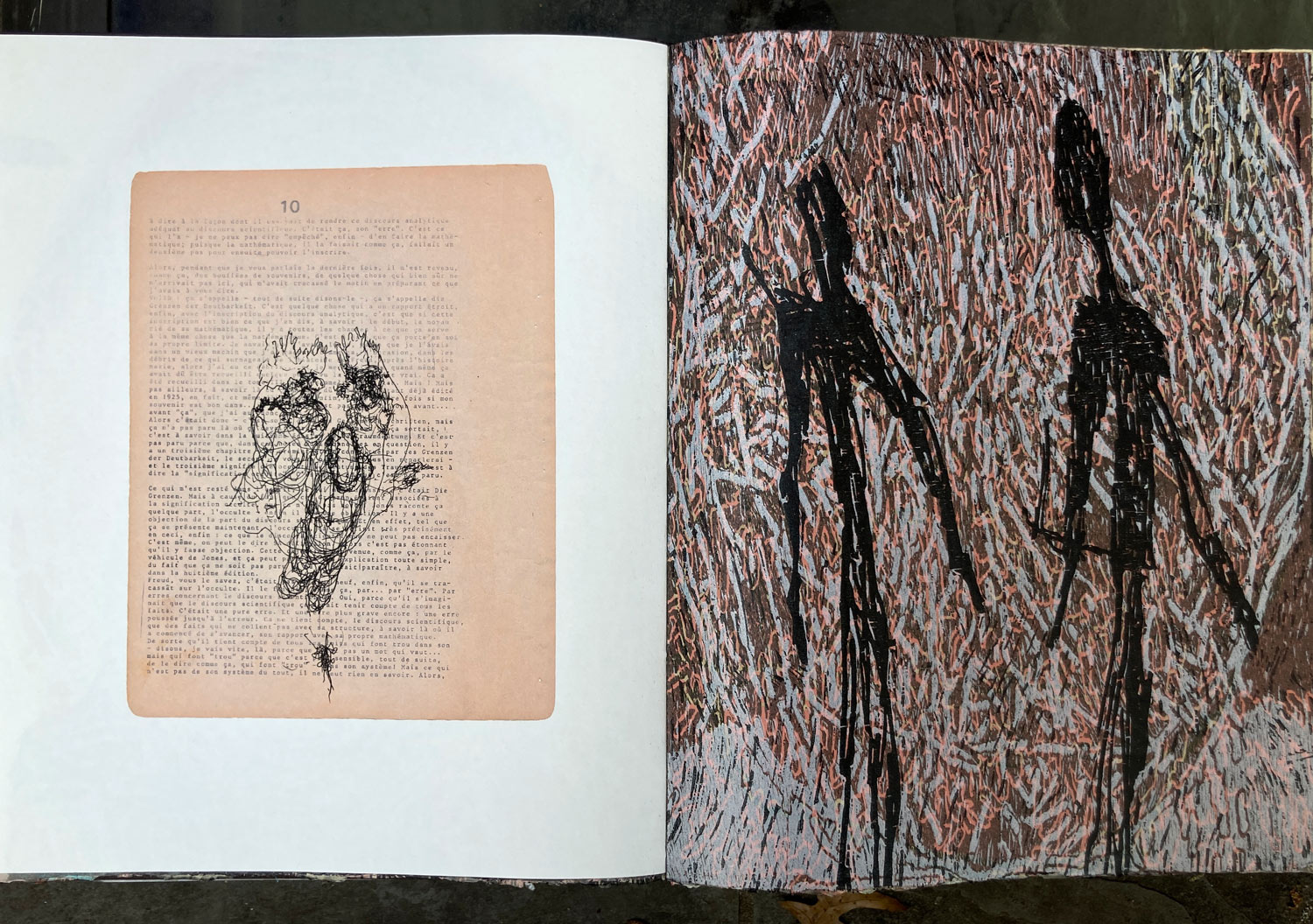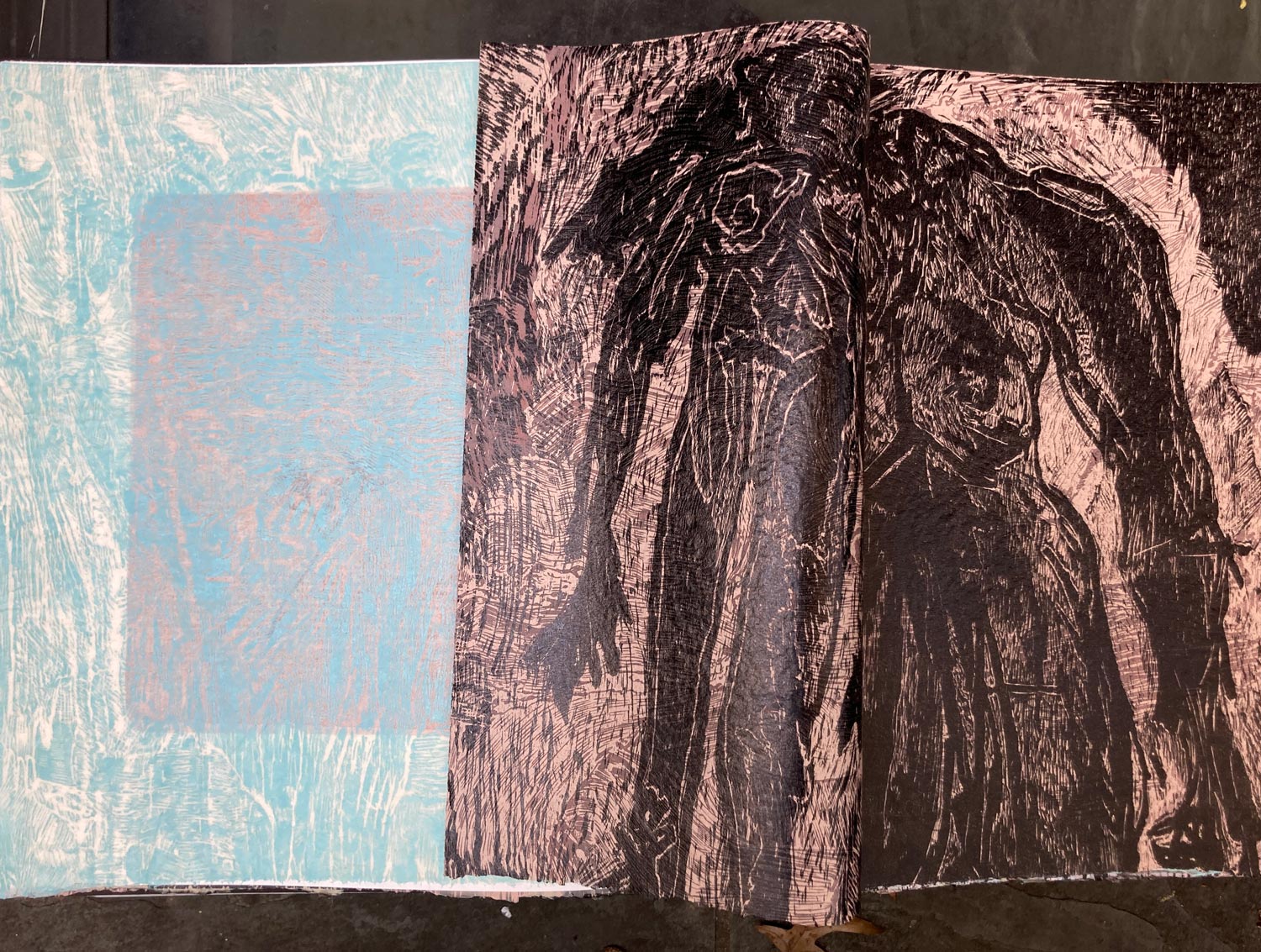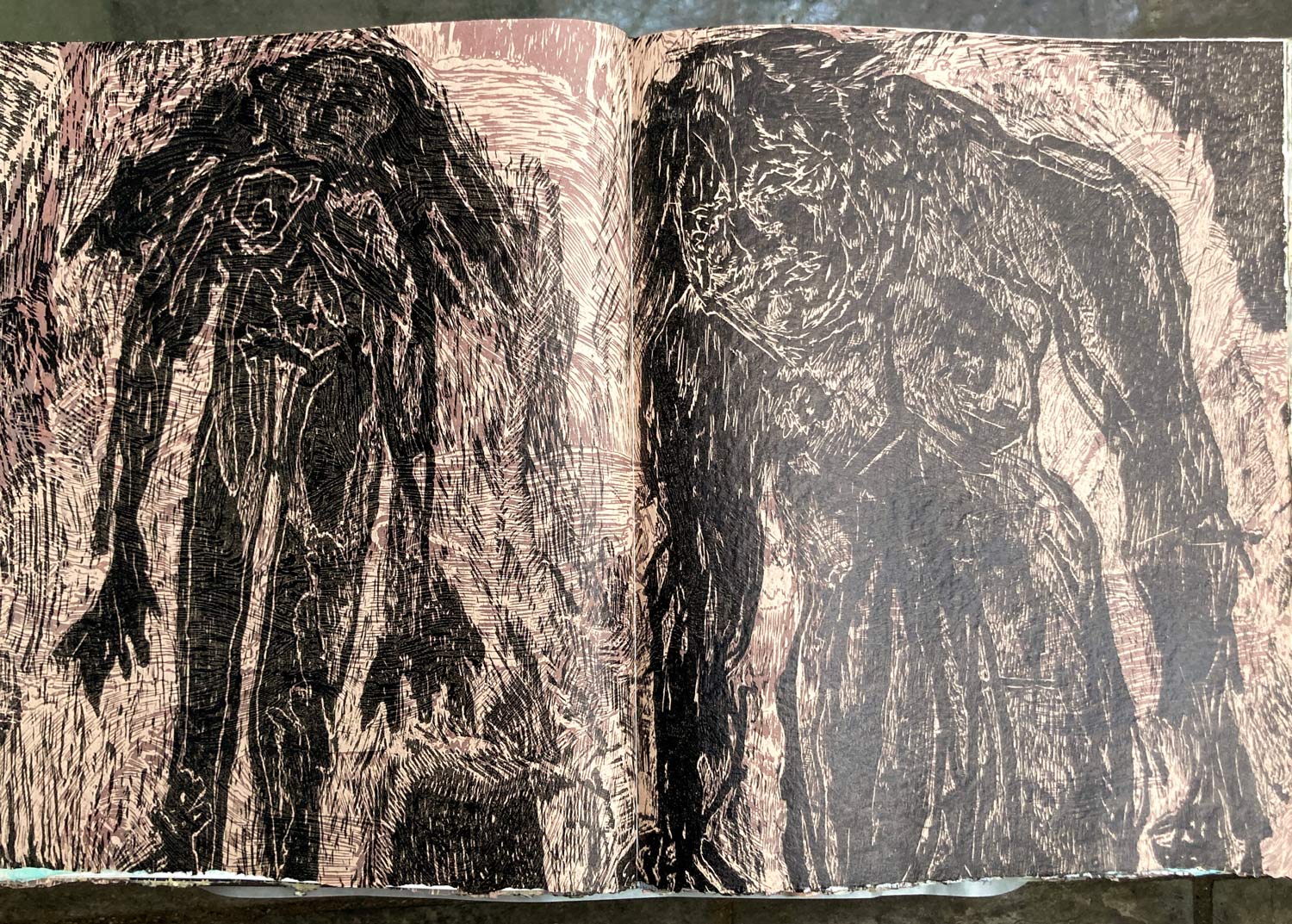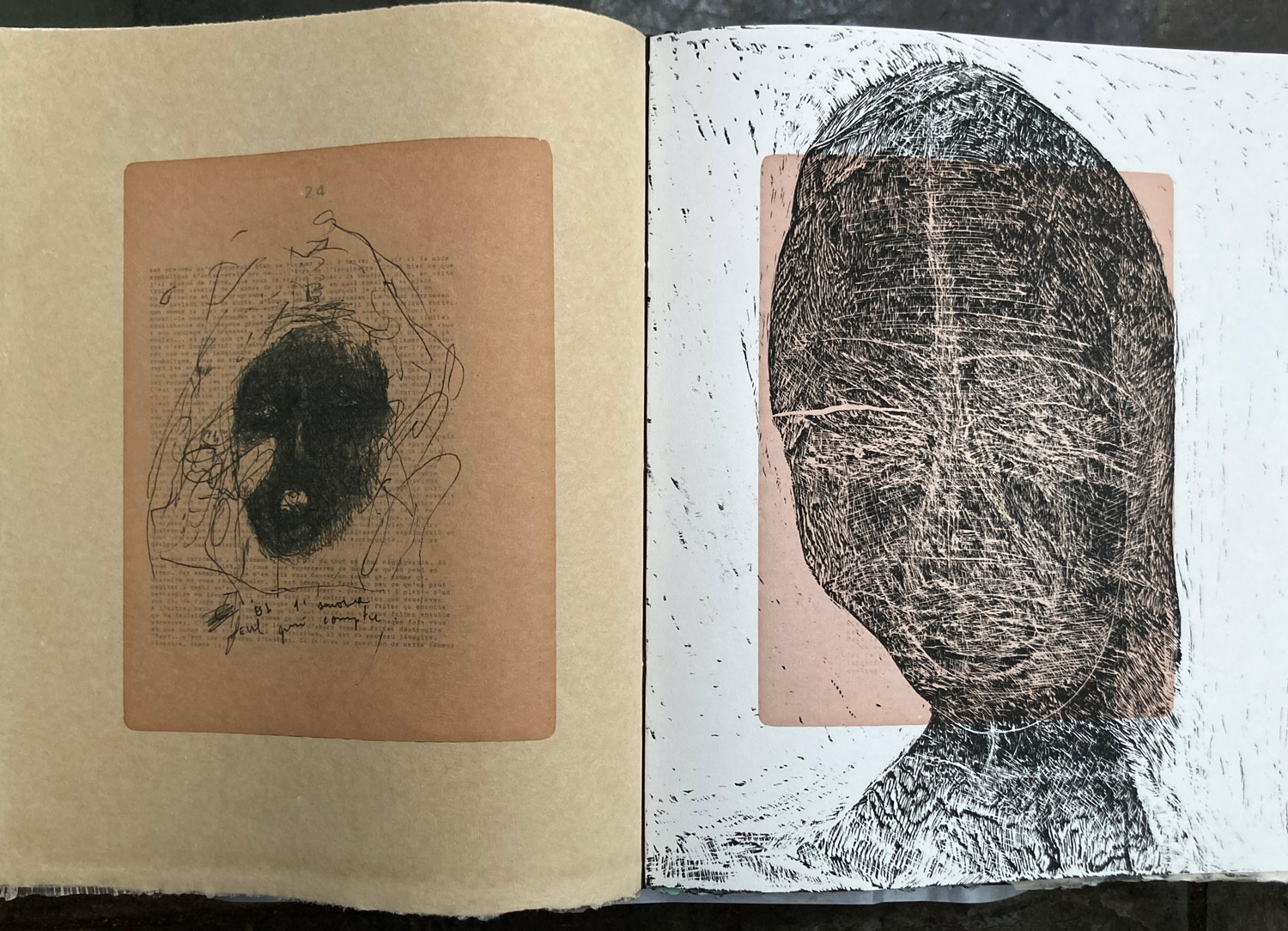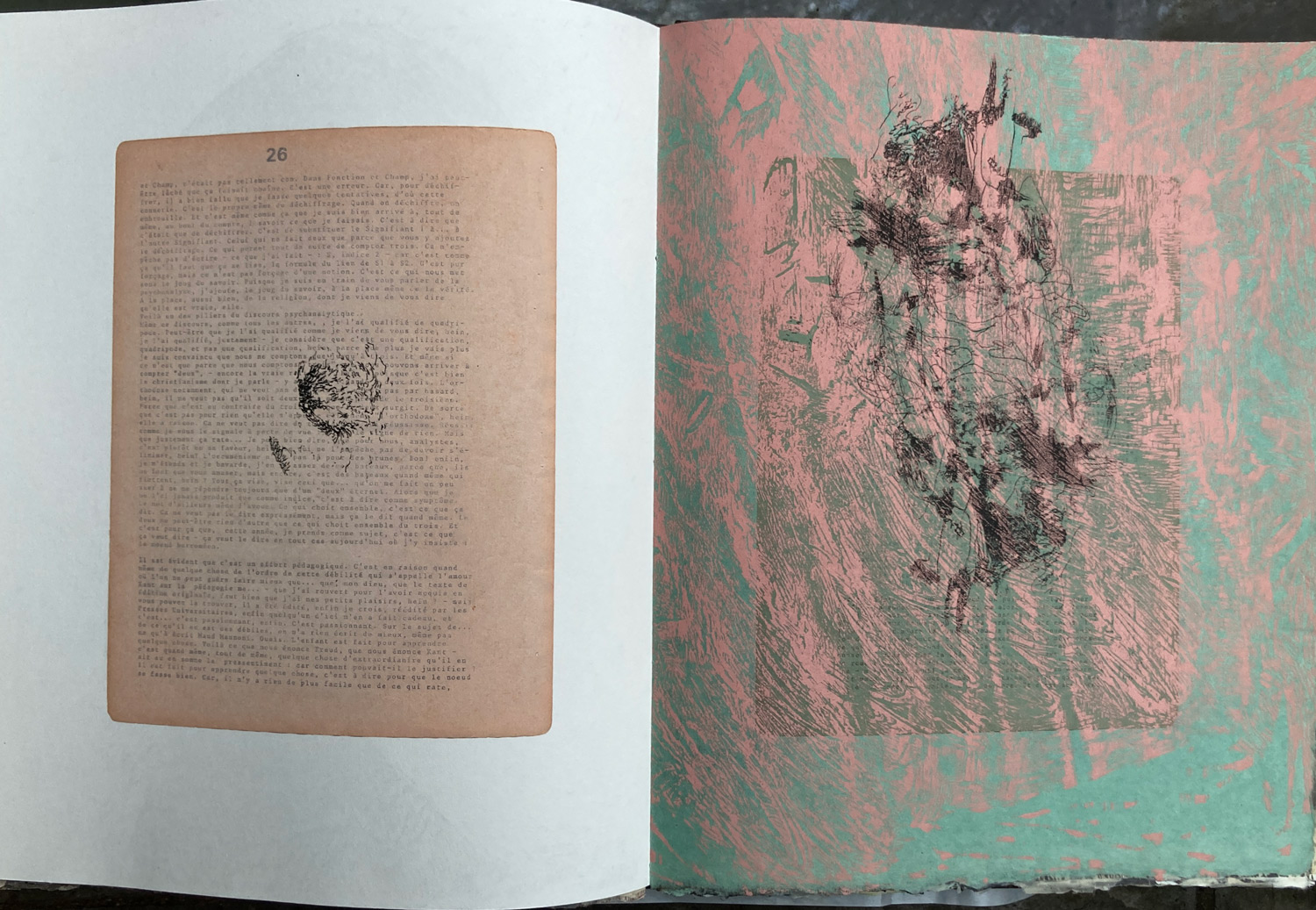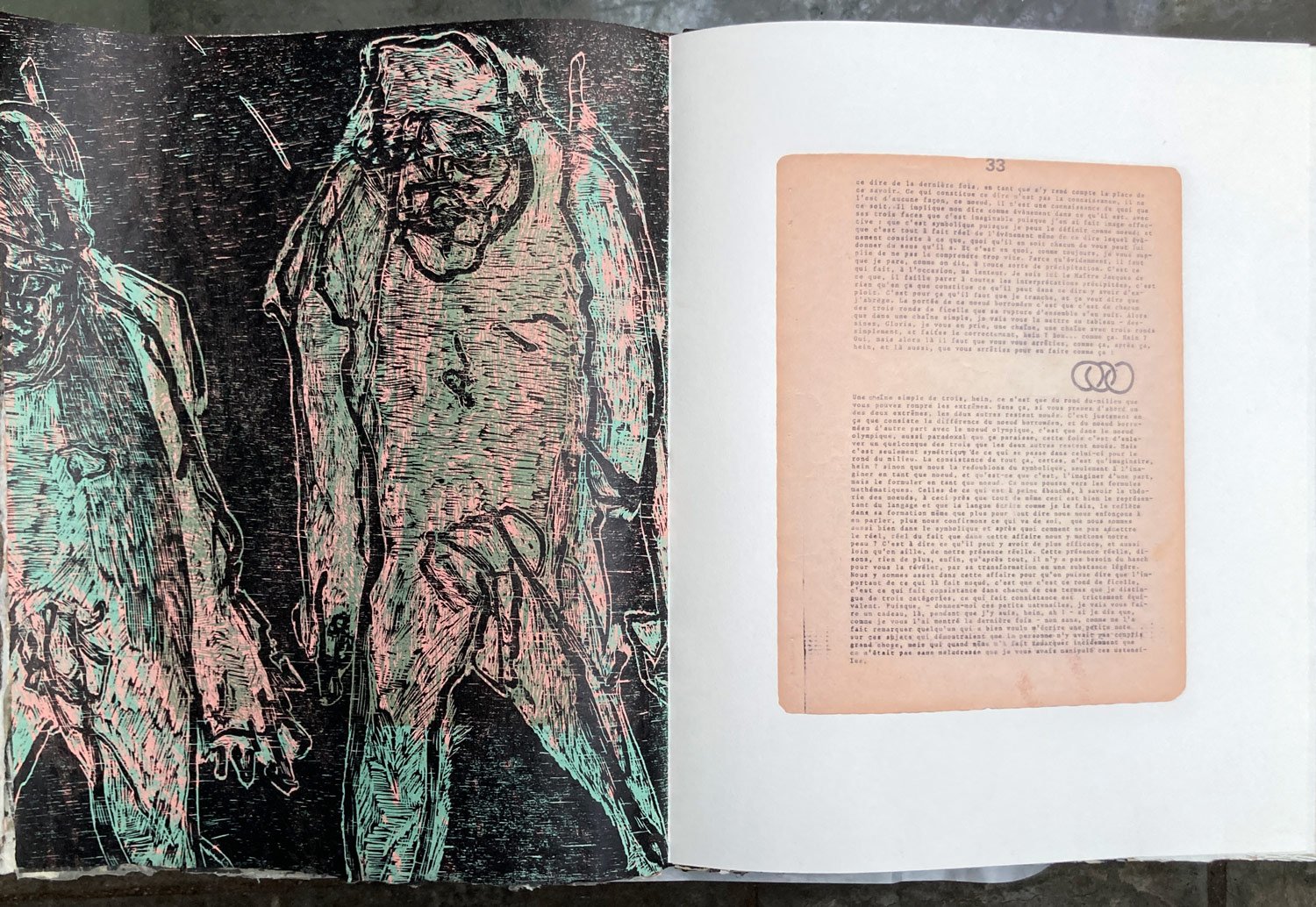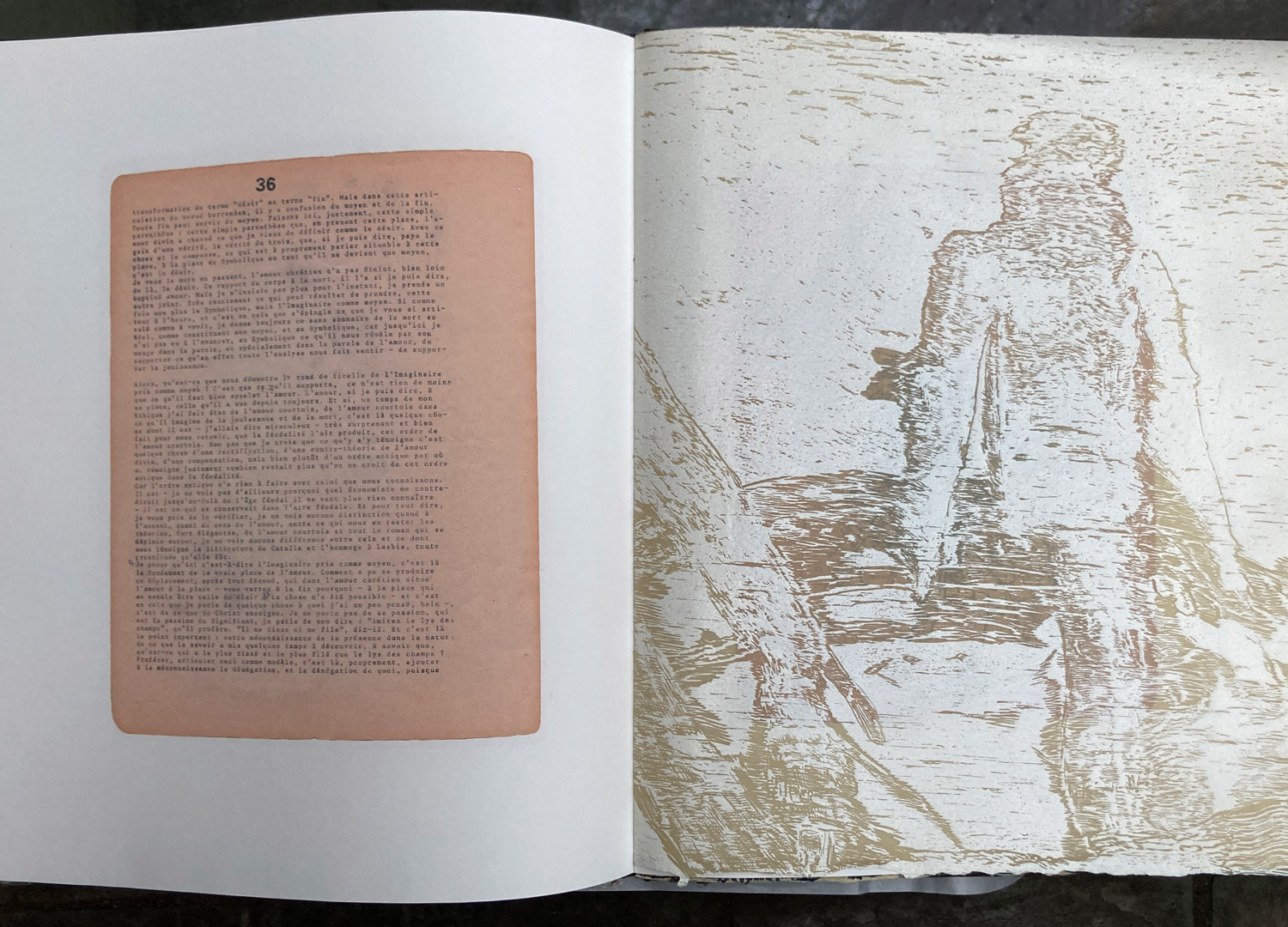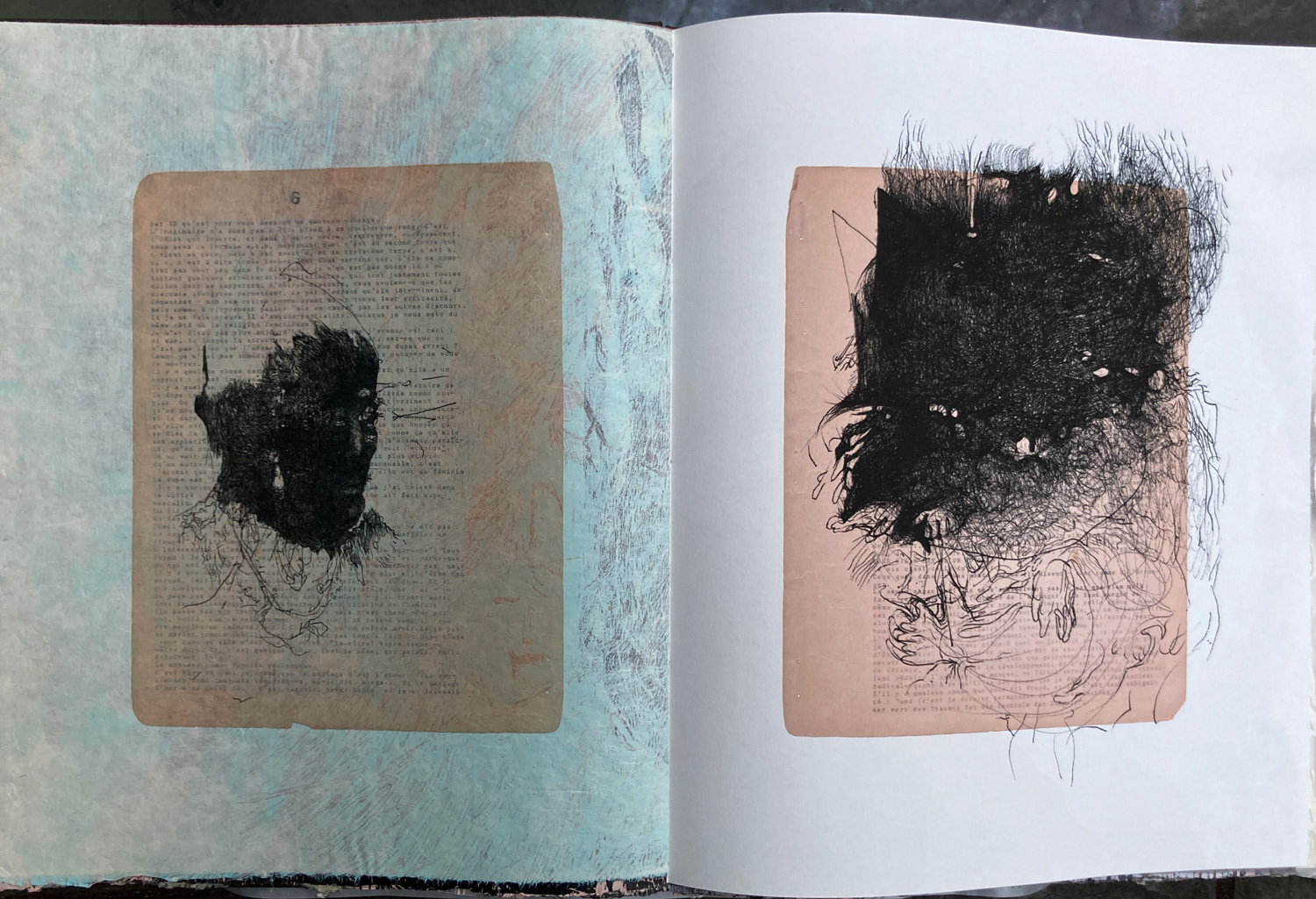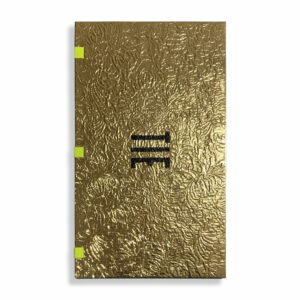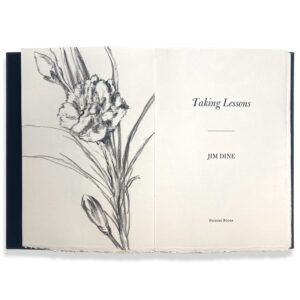“l’amour”
“l’amour”
Date
2023
Edition Size
23
Media
Digital print, Letterpress, Woodcut
Paper
abaca paper, Awagami Bamboo paper, handmade, Mitsumata, Yatsuo
Binding
Hand-sewn
Dimensions
13.25 × 10.75 in
Pages
96
Location
Brooklyn, NY
Publisher
Line Press Limited
Collection
Collection Development, Limited Edition Artists Books$ 6,000.00
1 in stock
View Collectors
Koninklijke Bibliotheek, Nationale Bibliotheek van Nederland
“l’amour” was inspired by a fragile typescript belonging to Olympe Racana-Weiler’s mother entitled: Jacques Lacan, “La’Amour”. There are 28 woodcuts that were hand carved by the artist, and printed by Ruth Lingen and Nina Dine in 52 print runs, which were developed, proofed and printed from 2019 – 2023.
The digital images of the typescript also include drawings from Racana-Weiler’s sketchbooks. All digital scanning & printing was done by Dine. Lingen hand set and printed metal and wood type. Various handmade papers are used. The binding is cloth over boards with hand stamping by Sarah Smith. There are 23 copies in the edition plus 3 artist proofs and 4 printer proofs. Each book is accompanied by a signed woodcut & digital print, and a prospectus.
“(Jacques Lacan, L’amour) contained the first section of “Seminar XXI: Les non-dupes errent,” delivered in Paris between 1973-74 by the French psychoanalyst Jacques Lacan. This seminar was given as an extension of Lacan’s unfinished 1963 seminar “Les Noms du Père,” which he delivered before the institution devoted to Freudian analysis. In response to its content, the institution would later excommunicate Lacan, interrupting the seminar and inciting him to establish his own School.
In this text, the richness of Lacan’s language unveils the phonetic mirror between the two titles and explores their ambiguity: “Les non-dupes errent,” roughly “those who are not fooled are the ones who err the most,” is an exact homophone of “Les Noms du Père,” “the names of the father.” The text reflects on the intrinsic relations of the speaking being with the three dimensions of language: the Symbolic, the Real, and the Imaginary. They are bound together, tied in a trinity, and free of empiricism.
I am interested in analysis as a specific space-time, and by extension this text has become a poetic source. I wanted to transform this found object into a real, physical, active territory; an experience. Jacques Lacan’s speech is eloquent, his delight in the speaking subconscious can be clearly heard, and his train of thought takes on a physical consistency. My work must also be thought in Lacan’s terms of the Real, the Imaginary, and the Symbolic, mixing abstract and figurative kinds of representation into the very concrete presence of the book. In the unfurling of these pages, I wanted to create an omnipresence, a confusion and forgetfulness, all while being held by the path, begun again after the fact by an eye, by the text, and then again in silence.” — Olympe Racana-Weiler

